Health Library
Colostomy - Series
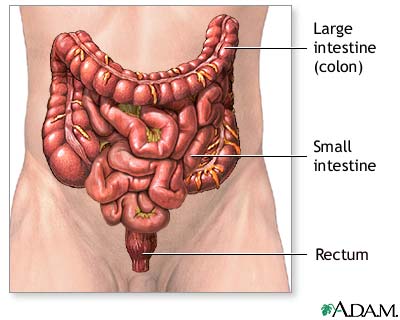
Normal anatomy
The colon, or large intestine, is a digestive organ located in the abdomen. The large intestine begins at the end of the small intestine and extends through the rectum and anus.
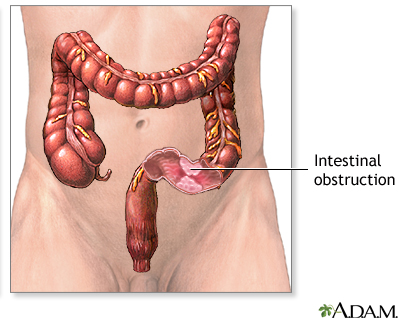
Indication
A colostomy is done when the lower large intestine, rectum, or anus is unable to function normally or needs rest from normal functions. Intestinal obstruction with associated inflammation, as in diverticulitis, is a common indication for colostomy.
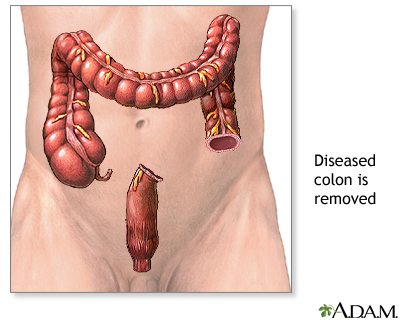
Procedure, part 1
A colostomy creates an opening on the abdomen (stoma) for the drainage of stool (feces) from the large intestine (colon). Colostomies are usually performed after the diseased colon has been removed.
Colostomies may be temporary or permanent. While the patient is deep asleep and pain-free (general anesthesia), an incision is made in the abdomen. The diseased colon is removed.
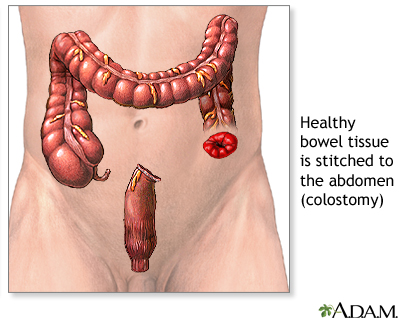
Procedure, part 2
The proximal end of the healthy colon is then brought out to the skin of the abdominal wall, where it is sutured in place. An adhesive drainage bag (stoma appliance) is placed around the opening. The abdominal incision is then closed.
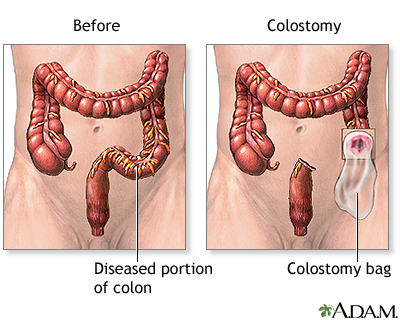
Aftercare
In more than 90% of the cases, the surgery is successful. The patient may experience considerable pain after surgery as the anus tightens and relaxes. Medications to relieve pain may be used. To avoid straining, stool softeners will be used. Avoid any straining during bowel movement or urination. Soaking in a warm bath can bring additional comfort. Depending on the disease process being treated, colostomies can be "taken down" and the colon reconnected in a second operation within weeks to months after the first operation.
Related Information
Colorectal cancerColostomy
Large bowel resection
BACK TO TOP
Review Date: 2/28/2022
Reviewed By: Debra G. Wechter, MD, FACS, General Surgery Practice Specializing in Breast Cancer, Virginia Mason Medical Center, Seattle, WA. Also reviewed by David Zieve, MD, MHA, Medical Director, Brenda Conaway, Editorial Director, and the A.D.A.M. Editorial team.
 | A.D.A.M., Inc. is accredited by URAC, for Health Content Provider (www.urac.org). URAC's accreditation program is an independent audit to verify that A.D.A.M. follows rigorous standards of quality and accountability. A.D.A.M. is among the first to achieve this important distinction for online health information and services. Learn more about A.D.A.M.'s editorial policy, editorial process and privacy policy. A.D.A.M. is also a founding member of Hi-Ethics. This site complies with the HONcode standard for trustworthy health information: verify here. |
The information provided herein should not be used during any medical emergency or for the diagnosis or treatment of any medical condition. A licensed medical professional should be consulted for diagnosis and treatment of any and all medical conditions. Links to other sites are provided for information only -- they do not constitute endorsements of those other sites. © 1997- 2022 A.D.A.M., a business unit of Ebix, Inc. Any duplication or distribution of the information contained herein is strictly prohibited.
